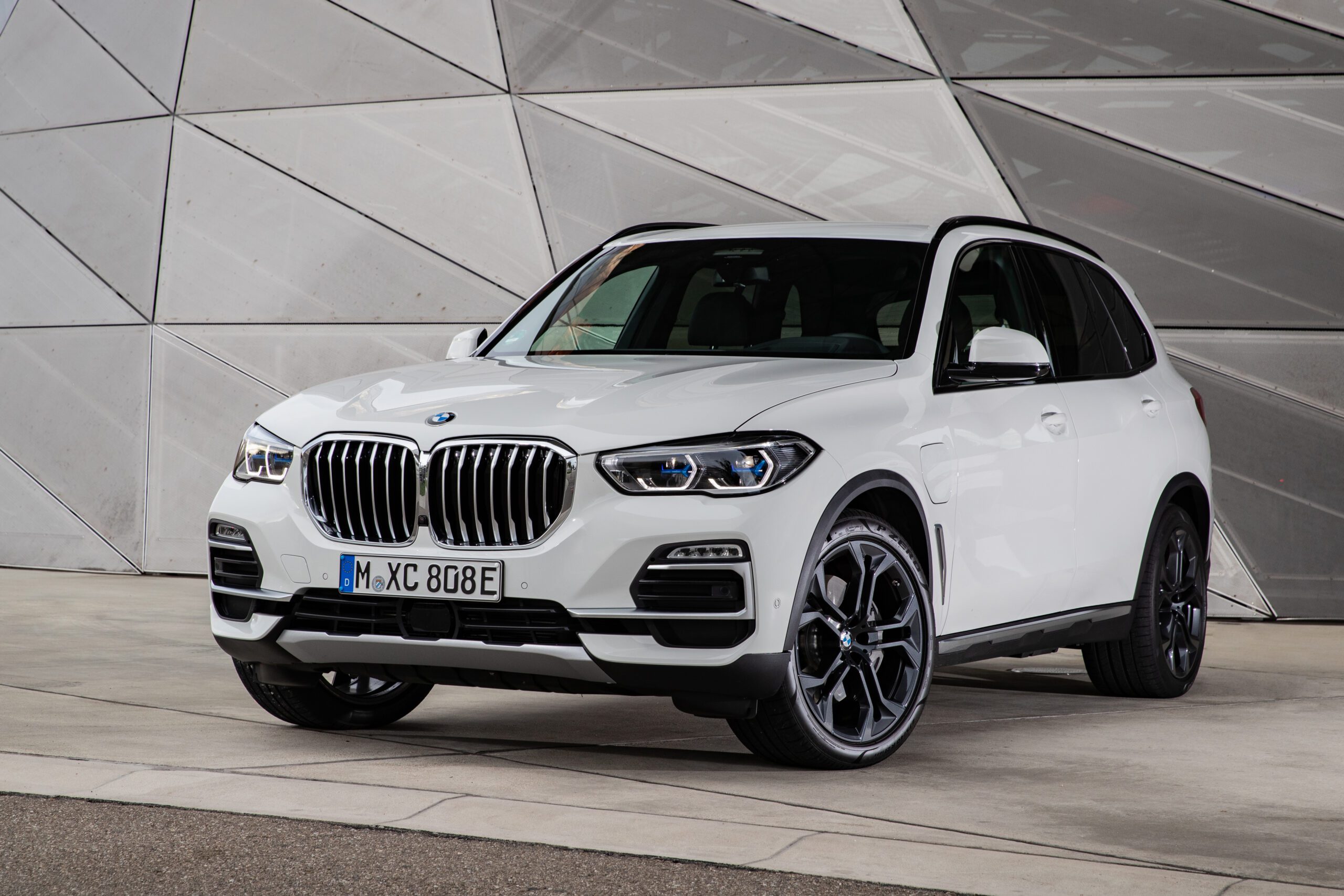Electric vehicles (EVs) are all the rage this year as brands begin gearing up for their electric revolutions. However, many understand that the complete transition to an EV lineup takes time and resources, so several brands have introduced plug-in hybrid technology in the meantime. While the technology is not new, it has become incredibly popular with automakers looking to make a strong transition to EVs.
BMW has been an active developer of plug-in hybrid technology since the start of its electric i-Series lineup in the early 2010s — the quirky i3 compact car and the iconic i8 sports coupe used it. BMW discontinued both vehicles, but the new generation of plug-in hybrids has arrived, with models like the X5 xDrive45e SUV leading the pack.
The BMW X5 plug-in hybrid is one of three of the brand’s plug-in hybrid (PHEV) offerings, the other two being the 3 and 5 Series sedans. Like the other two, the X5 PHEV offers the same design elements as its internal combustion base model. Where it stands out is with its technological and engineering specs.
For starters, the xDrive45e offers plenty of performance with its in-line six-cylinder internal combustion motor, backed up by an electric one that combines to create a total of 389 horsepower and 443 lb-ft of torque. The SUV bolts its way to 60 mph in just 5.3 seconds, giving it an impressive amount of pep for a partially internal combustion car of that size.
BMW designed the electric motor to get plenty of use. With a 31-mile range from its 17.1 kWh battery, the X5 PHEV should cover an average commute. Should the 31 miles not be enough, it can dip into its generous gas-powered reserves. The EV enjoys a regenerative braking system that can help recharge the batteries without a charging station. This system is helpful, considering the car doesn’t have the bandwidth for an actual DC fast-charging station.
In addition, the electric motors reach 84 mph before switching to internal combustion, which gives the car much more freedom to use its electric engine.
The one caveat to this is that the motor is not very powerful, with only 111 horsepower and 195 lb-ft of torque, so if you plan on driving over 80 mph during an outing, it may take a while.
Because of these slightly sportier characteristics, the car distinguishes itself from other luxury vehicles like the Mercedes GLE, Audi Q8 and Genesis GV80. Its cabin is upscale and elegant, with faux leather adorning the upholstery.
The digital dashboard layout is designed specifically for the hybrid model, so important information, such as electric range, output, and charge status, is right at your fingertips.
The five-seater SUV has two rows of seats but limited legroom due to the lack of space underneath the floor. However, the EV manages to have 33 cubic feet of cargo space. In addition, the interior comes standard with plenty of extra features, including a panoramic sunroof, rain-sensing windshield wipers, and customizable ambient lighting.
The xDrive45e has all the safety features that come standard on any X5 BMW, but it does enjoy better safety in the rollover crash tests because of the extra weight from its battery pack, located under the car’s floor.
The BMW X5 xDrive45e starts at $63,700, but it is eligible for the $7,500 tax credit offered by the federal government. This EV isn’t as powerful as an M-Series BMW. However, it is a beautiful marriage between technology, performance, and luxury and fits nicely into the next stage of BMW’s electrification initiative.





